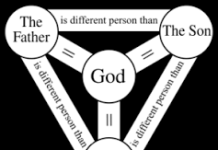Salam alaekum everyone
One needs to understand difference between seven styles (al-ahruf al-saba’ ) and seven recitations (al-qiraa’aat al-saba’),

The Qur’aan was revealed in one style at the beginning, but the Messenger of Allaah (peace and blessings of Allaah be upon him) kept asking Jibreel until he taught him seven styles, all of which were complete.
The evidence for that is the hadeeth of Ibn ‘Abbaas who narrated that the Prophet (peace and blessings of Allaah be upon him) said:
“Jibreel taught me one style and I reviewed it until he taught me more, and I kept asking him for more and he gave me more until finally there were seven styles.”
(narrated by al-Bukhaari, 3047; Muslim, 819)
What is meant by styles (ahruf, sing. harf)?
The best of the scholarly opinions concerning what is meant is that there are seven ways of reciting the Qur’aan, where the wording may differ but the meaning is the same; if there is a different meaning then it is by way of variations on a theme, not opposing and contradiction.

Some of the scholars said that what was meant by ahruf was the dialects of the Arabs, but this is far-fetched,
because of the hadeeth of ‘Umar ibn al-Khattaab who said: “I heard Hishaam ibn Hakeem reciting Soorat al-Furqaan in a manner different from that in which I used to recite it and the way in which the Messenger of Allaah (peace and blessings of Allaah be upon him) taught me to recite it.
I was about to argue with him whilst he was praying, but I waited until he finished his prayer, and then I tied his garment around his neck and seized him by it and brought him to the Messenger of Allaah (peace and blessings of Allaah be upon him) and said,
‘O Messenger of Allaah, I heard this man reciting Soorat-al-Furqaan in a way different to the way you taught it to me.
’ The Messenger of Allaah (peace and blessings of Allaah be upon him) said to him, ‘Recite it,’ and he recited it as I had heard him recite it.
The Messenger of Allaah (peace and blessings of Allaah be upon him) said, ‘It was revealed like this.’ Then he said to me, ‘Recite it,’ so I recited it and he said, ‘It was revealed like this.’
This Qur’aan has been revealed in seven different ways, so recite it in the way that is easiest for you.’”
(Narrated by al-Bukhaari, 2287; Muslim, 818)

It is known that Hishaam was Asadi Qurashi (i.e., from the clan of Bani Asad in Quraysh) and ‘Umar was ‘Adawi Qurashi (i.e., from the clan of Bani ‘Adiyy in Quraysh). Both of them were from Quraysh and Quraysh had only one dialect.
If the difference in ahruf (styles) had been a difference in dialects, why would two men of Quraysh have been different?
The scholars mentioned nearly forty different opinions concerning this matter! Perhaps the most correct is that which we have mentioned above. And Allaah knows best.
It seems that the seven styles were revealed with different wordings, as indicated by the hadeeth of ‘Umar, because ‘Umar’s objection was to the style, not the meaning.
The differences between these styles are not the matter of contradiction and opposition, rather they are synonymous, as Ibn Mas’ood said: “It is like one of you saying halumma, aqbil or ta’aal (all different ways of saying ‘Come here’).”
With regard to the seven recitations (al-qiraa’aat al-saba’);
This number is not based on the Qur’aan and Sunnah, rather it is the ijtihaad of Ibn Mujaahid (may Allaah have mercy on him).
People thought that al-ahruf al-saba’ (the seven styles) were al-qiraa’aat al-saba’ (the seven recitations) because they happened to be the same number.
But this number may have come about coincidentally, or it may have been done deliberately by Ibn Mujaahid to match what was narrated about the number of styles (ahruf) being seven. Some people thought that the styles (ahruf) were the recitations, but this is a mistake.
No such comment is known among the scholars.
The seven recitations are one of the seven styles, and this is the style that ‘Uthmaan chose for all the Muslims.
See Also: https://knowislam.com.ng/2017/06/02/misconceptions-of-jesus-in-the-bible/
When ‘Uthmaan made copies of the Qur’aan, he did so according to one style (harf), but he omitted the dots and vowel points so that some other styles could also be accommodated.
So the Mus-haf that was copied in his time could be read according to other styles, and whatever styles were accommodated by the Mus-haf of ‘Uthmaan remained in use, and the styles that could not be accommodated fell into disuse.
The people had started to criticize one another for reciting differently, so ‘Uthmaan united them by giving them one style of the Qur’aan.
Saying that Mujaahid’s different recitations meant the seven styles (ahruf) is not correct, as was said by Shaykh al-Islam ibn Taymiyyah. (Majmoo’ah al-Fatawa, vol. 13, p. 210)
The seven readers or reciters were:
1- Naafi’ al-Madani
2- Ibn Katheer al-Makki
3- ‘Aasim al-Kufi
4- Hamzah al-Zayaat al-Kufi
5- Al-Kisaa’i al-Kufi
6- Abu ‘Amr ibn al-‘Ala’ al-Basri
7- ‘Abd-Allaah ibn ‘Aamir al-Shaami

The ones who have the strongest isnaad in recitation are Naafi’ and ‘Aasim.
The most eloquent are Abu ‘Amr and al-Kisaa’i.
Warsh and Qaaloon narrated from Naafi’.
Hafs and Shu’bah narrated from ‘Aasim.
With Harf its intension is pronunciation, not a different version or different words.
The Lajnah al-Daa-imah explained it as follows:
The recitations of the Qur’an have been transmitted by Tawatur (a significant number of narrators whose agreement upon a lie is impossible) and the reality of the Qur’an confirms this. All the Qira’at of the Qur’an were a revelation from Allah, the All-Wise, worthy of all Praise. Therefore, the diversity of Qira’at are not due to distortion, alteration, or ambiguity in the meanings of the Qur’an. They do not imply contradiction or confusion in the intended objectives. Rather, they confirm and explain one another. According to some Qira’at certain meanings may differ, yet this difference aims at achieving a goal in the Shari‘ah (Islamic law) or providing a benefit for people while remaining consistent in meaning, agreeing in objectives, forming a part of one complete, perfectly accurate legislation body, without the slightest blemish of conflict or contradiction among them.
Source: http://www.alifta.com/Fatawa/FatawaC…eNo=1&BookID=7
__________________
Shaykh Maahir bin Dhaafir al-Qahtaani hafidhahullah said that: “Ibn Hibbaan reported through the way of Naafi’ on the authority of ibn ‘Umar radiAllaahu ‘anhu, that he said radiAllaahu ‘anhu:”
“There were no stories in the time of the Prophet (صلى الله عليه وسلم), and not in the time of abu Bakr, and not in the time of ‘Umar, and not in the time of ‘Uthmaan, but instead stories were introduced (اُحْدِثَتْ) in the time of the fitna.”
And Allaah knows best.
Source: Islam Q&A
Funsho Animashaun @ knowislam.com.ng






